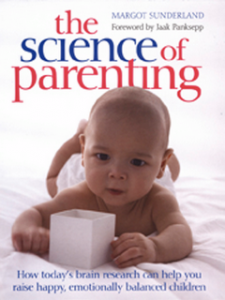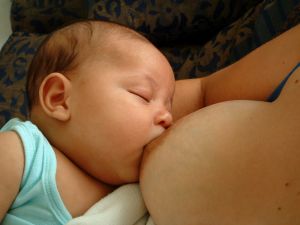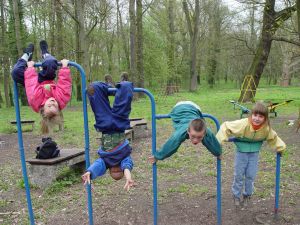By Rita Brhel, managing editor and attachment parenting resource leader (API)
 Even as late as a generation ago, teasing was considered almost a rite of passage for school-age children. It was seen as the natural establishment of the childhood “pecking order” – either you were teased or you became the bully, at least once.
Even as late as a generation ago, teasing was considered almost a rite of passage for school-age children. It was seen as the natural establishment of the childhood “pecking order” – either you were teased or you became the bully, at least once.
Within the last decade, more attention has been directed to the severely negative effects of this “normal” part of childhood. Research has found that bullying – which can include name-calling, teasing, spreading of rumors, threats, stealing possessions, and other forms of intimidation, even as extreme as hitting, pushing, and additional physical violence – has long-term effects on the emotional well-being of children and teens, well into their adult years.
The Effect of Bullying on the Victim
In her article “Teasing and Bullying: No Laughing Matter,” published on www.scholastic.com, author Diana Townsend-Butterworth warns of how bullying can distort emotional and mental development, not only through the psychological torture of being a victim but also because the fear of being bullied can take a toll on academic and social success through loss of concentration and reduced class attendance. School becomes a place to be feared for many children who are bullied. Bullying also affects self esteem development and may cause depression, both of which can last well into adulthood, hurting their professional achievements and personal relationships.
The Effect of Bullying on the Bully
Bullies, too, often have difficulty in forming positive relationships in adulthood, reports Townsend-Butterworth. Bullies are more likely to use tobacco and alcohol, to become abusive in their marital and parental relationships, and to engage in criminal activities.
The Effect of Bullying on the Bystander
Even children who are not directly involved, either as bullies or as targets, may be adversely affected, Townsend-Butterworth continues. Academically, these innocent bystanders suffer from disruption in the classroom created by a bully or by the teacher disciplining the bully or attending to the victim. These children can also be traumatized by witnessing the bully in action, fearing that they be the next victim or feeling guilty for not helping the target, according to James Garbarino, PhD, author of Lost Boys and Words Can Hurt Forever.
Bullying Hurtful No Matter the Form…or the Age
Bullying is also not limited to boys or girls, either. It used to be that only boys could be bullied; girls were teased. Actually, teasing and bullying are one in the same. What is different is how they are expressed by the different genders. As Townsend-Butterworth explains, boys are typically physical in their bullying. They might push each other or steal someone’s backpack. On the other hand, girls are usually more subtle and indirect. A young girl may threaten not to be someone’s friend unless that friend gives her something in return, and an older girl will tell other girls not to be friends with someone or say a hurtful remark and then pretend they didn’t mean it.
Incredibly, bullying can begin as early as preschool. Bullying is also common around the world, in all cultures, ethnicities, and socio-economic classes. Townsend-Butterworth reports research that estimates as many as a third of all school-age children are involved in bullying, either as bullies or victims. In some schools, such as those with students of mixed ethnicities or socio-economic classes, this number may be higher. Bullying often intensifies at certain transitional stages, such as starting elementary school, middle school, or high school. While bullying is no longer considered customary, and most schools have adopted some form of anti-bullying policies, children can’t be fully protected since bullying can take many forms and can occur elsewhere.
Where Children Learn to Bully
The goal of Attachment Parenting (AP) is to raise children to be empathetic, compassionate, loving people. Instilling these values in children early, and continuing to nurture these qualities as they child grows, is an inoculation against them becoming bullies. Children learn to bully from their peers, and even from adults and media influences, writes Townsend-Butterworth. Even unconsciously, parents may teach bullying behaviors by the way they speak to or treat their children.
“If children experience put-downs or physical punishment at home or in school, and if they see emotional and psychological abuse go unchallenged, they believe this behavior is acceptable,” Townsend-Butterworth writes. “Bullies like to feel powerful and in control. They are insensitive to the feelings of others and defiant toward adults.”
How Children Become Targets of Bullying
But, what about not becoming a victim? Some AP parents may worry that if their child isn’t aggressive, he will get bullied himself. But, as Townsend-Butterworth explains, children who repeatedly find themselves the target of bullying are similar in that they have a shy personality, low self-esteem, poor social skills, and less physical strength.
“Bullies consider these children safe targets, because they usually don’t retaliate,” Townsend-Butterworth writes. In addition, repeated targets inadvertently “reward” bullies by giving in to them, according to a 1997 article from the National Association for the Education of Young Children, “Teaching Children Not to Be, or Be Victims of, Bullies,” reprinted on the Focus Adolescent Services website www.focusas.com, which works to support families of troubled and at-risk teens.
Unfortunately, as this article points out, targets of bullying are not helped by adults speaking for them; sometimes, this can actually make the bullying more aggressive. The goal for parents is not to teach aggression, but assertiveness. According to Focus, while parents can’t solve the problem of bullying, they do hold the key to teaching their children to avoid becoming victims.
“Children must learn that they have the right to say ‘no,’” according to the National Association for the Education of Young Children article, “not only when they are threatened, but in a wide range of everyday situations.”
While parents can’t solve the problem of bullying, they do hold the key to teaching their children to avoid becoming victims.
 We started out 2014 talking about The Science of Parenting by Margot Sunderland. Some of the interesting sections from the remaining portions of the book are:
We started out 2014 talking about The Science of Parenting by Margot Sunderland. Some of the interesting sections from the remaining portions of the book are:

 Dahlia was running around the house screaming and crying. “I hate her! I hate her! I will never play with her again!”
Dahlia was running around the house screaming and crying. “I hate her! I hate her! I will never play with her again!”